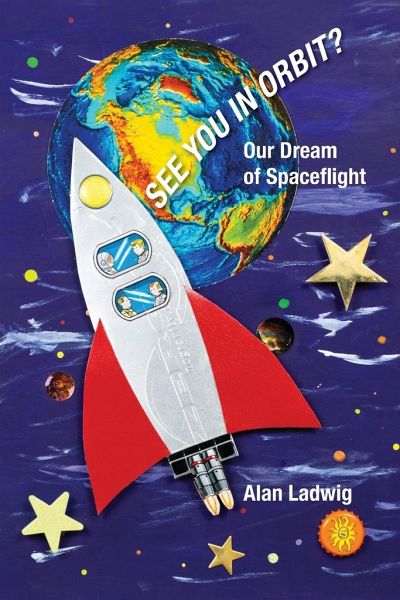
See You In Orbit? Our Dream Of Spaceflight
Versandkostenfrei!
Versandfertig in über 4 Wochen
17,99 €
inkl. MwSt.

PAYBACK Punkte
9 °P sammeln!
Raise your hand if you want to fly in space! If so, you share a quest with millions of dreamers around the world who have patiently, and impatiently, anticipated Sunday afternoon drives down celestial freeways. Yet, since human space travel began, fewer than 560 professional astronauts, cosmonauts, taikonauts and a-half dozen millionaires have gazed down at Earth from inside a spaceship. Given so few orbiting travelers, what made so many ordinary people think they had the slightest chance to fulfill their dream? Because for the past 60 years, space visionaries, aerospace companies, government ...
Raise your hand if you want to fly in space! If so, you share a quest with millions of dreamers around the world who have patiently, and impatiently, anticipated Sunday afternoon drives down celestial freeways. Yet, since human space travel began, fewer than 560 professional astronauts, cosmonauts, taikonauts and a-half dozen millionaires have gazed down at Earth from inside a spaceship. Given so few orbiting travelers, what made so many ordinary people think they had the slightest chance to fulfill their dream? Because for the past 60 years, space visionaries, aerospace companies, government agencies, and the media have told us our ticket to ride was just a rocket away. All we had to do was "keep the dream alive." The tale begins with the visions of theoretical and practicing aerospace engineers in the 1920s and 30s; reviews space achievements and predictions for public space travel throughout the Space Race beginning in the 1950s and throughout the 60s; features public expectations in response to the advertised capabilities of the space shuttle throughout the 1970s and 80s; recounts the creation of the Space Flight Participant Program and the tragic Challenger accident (including the Teacher in Space and Journalist in Space initiatives); examines the post-Challenger reboot regarding citizen flights; and concludes on a note of optimism that the recent advances by NewSpace companies will make the dream of space flight a reality for a larger number of ordinary folks. Previously reported and well-known historical space events are intertwined throughout the story, but for the first time are recast from a perspective of what was being said about citizen space flights at the same time. The story is told through the language and norms of the times, so certain words or phrases may upset your current sensibilities. See You in Orbit? Our Dream of Spaceflight will guide you on a historical, personal, irreverent, and often-humorous tour of the promises, expectations, principal personalities, and milestones regarding the goal individuals have to fly in space. At the end of the tour we'll assess whether we are getting closer to the day when we can greet fellow dreamers with the joyful salutation: See You in Orbit!












